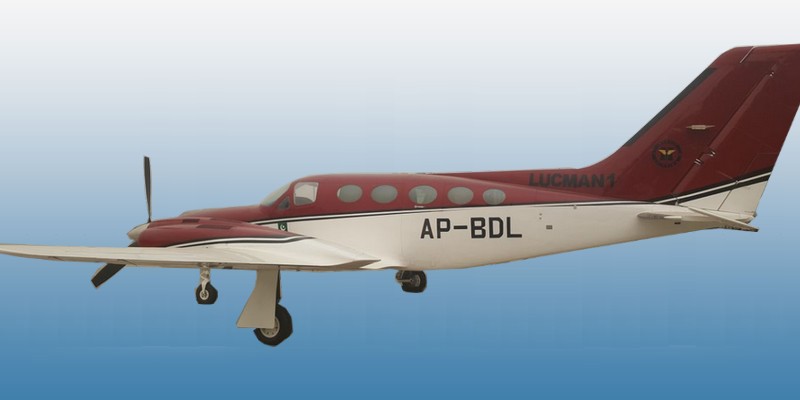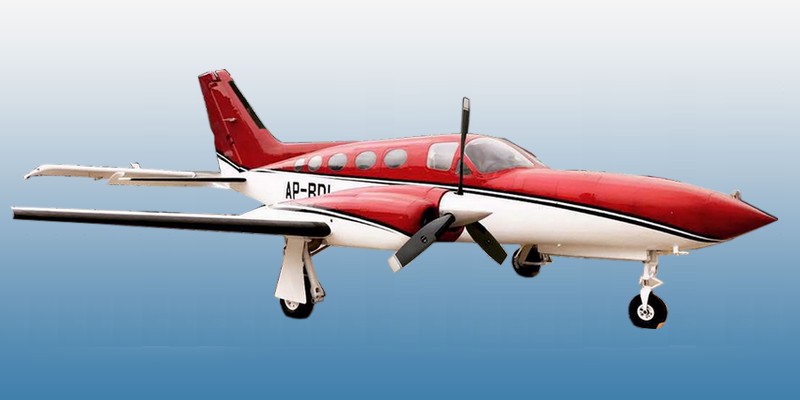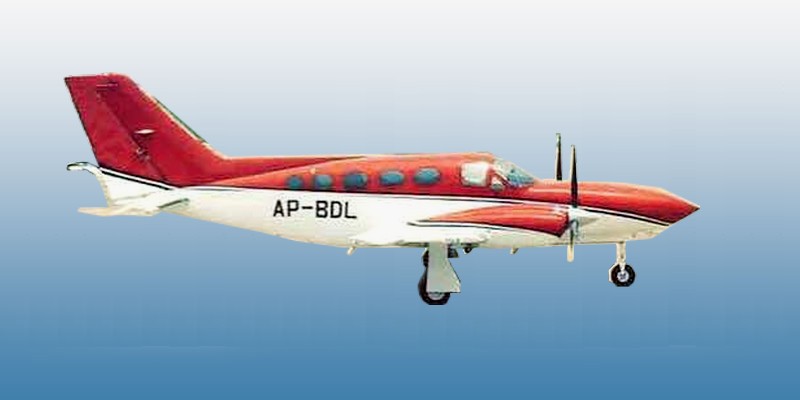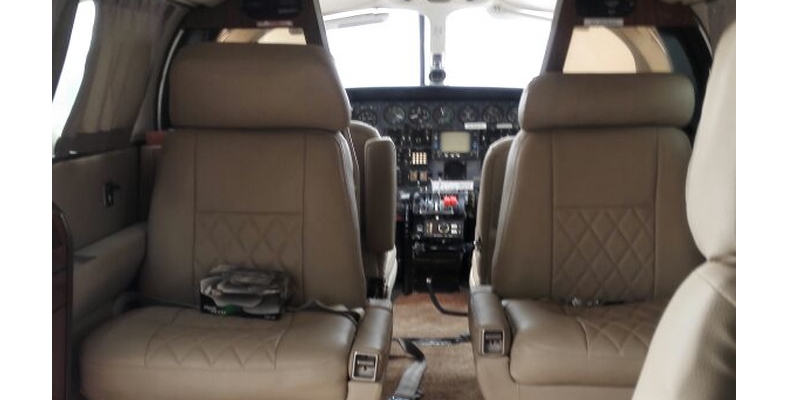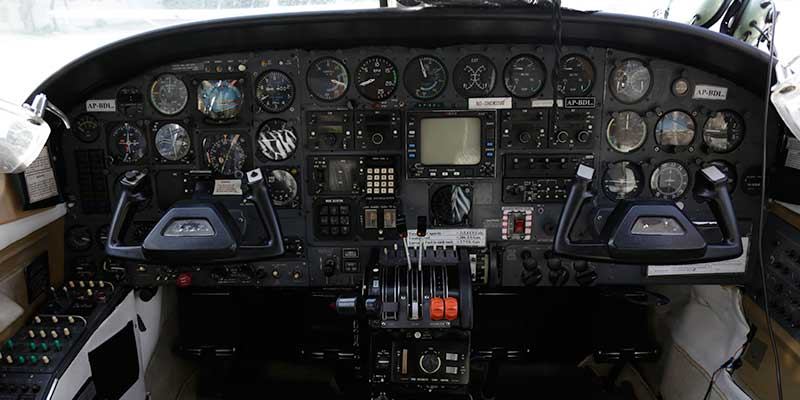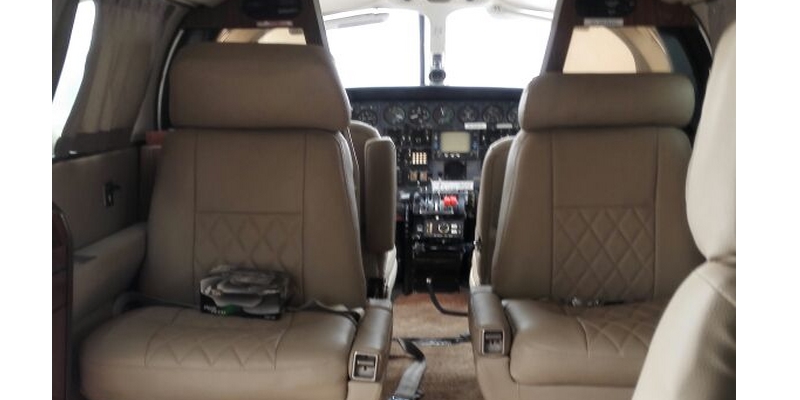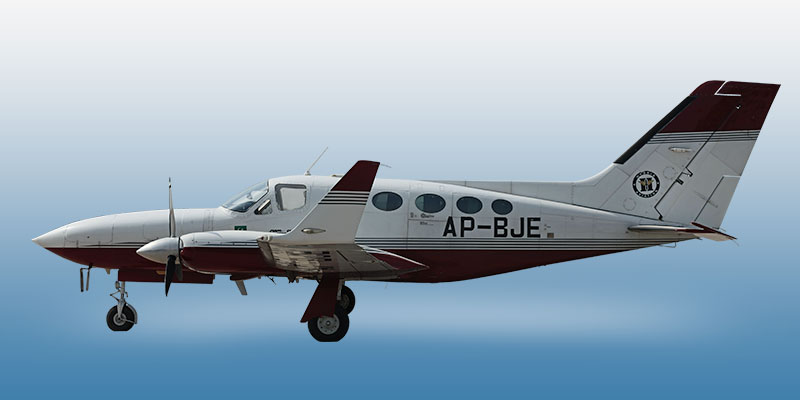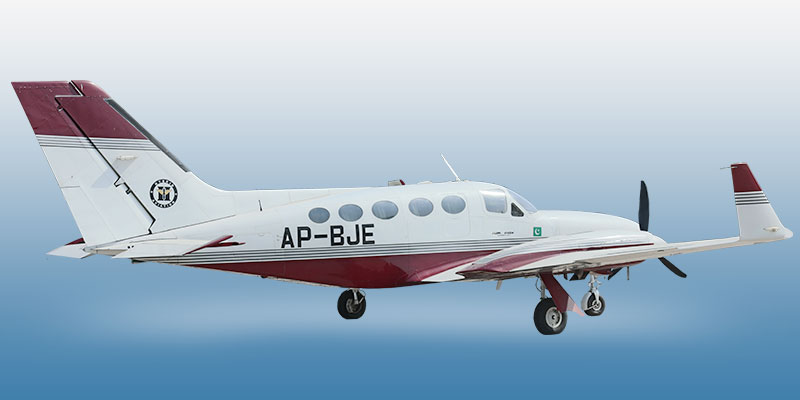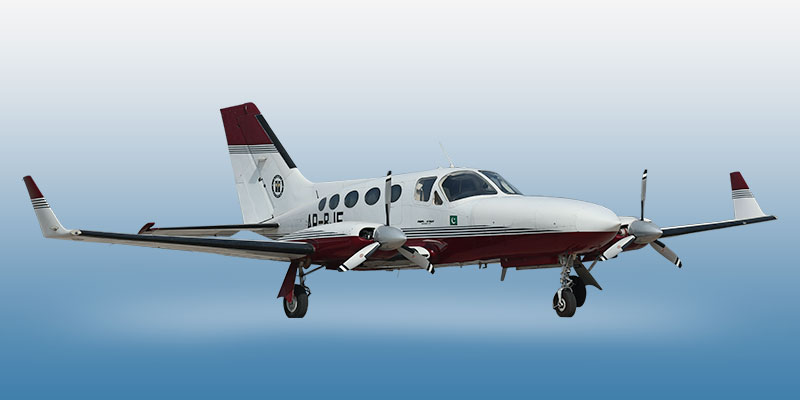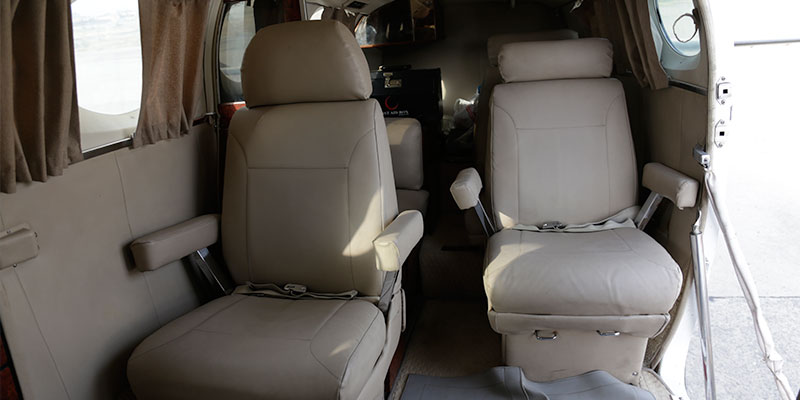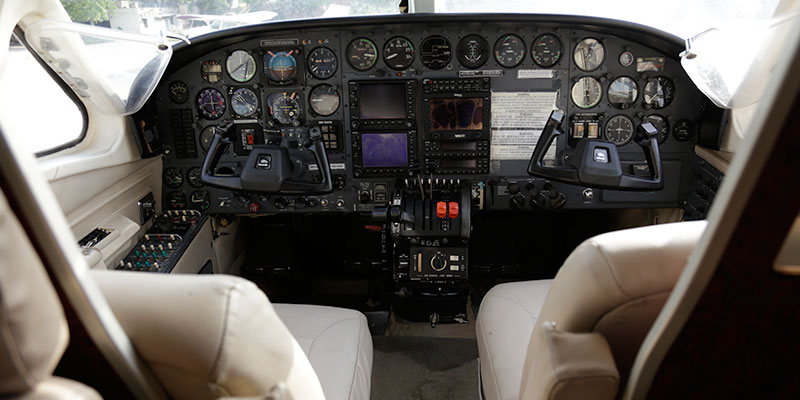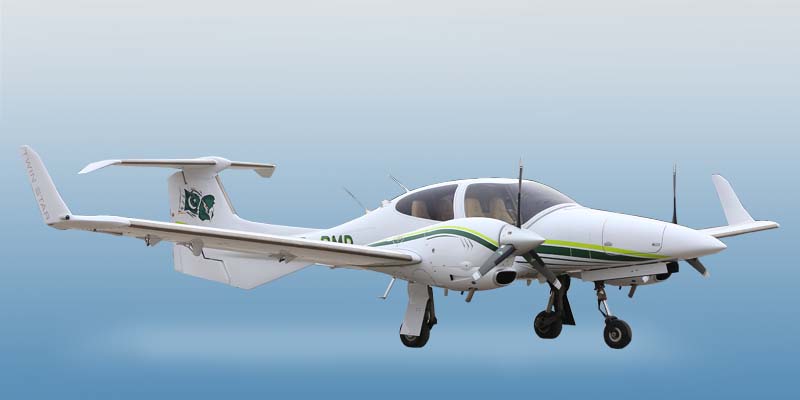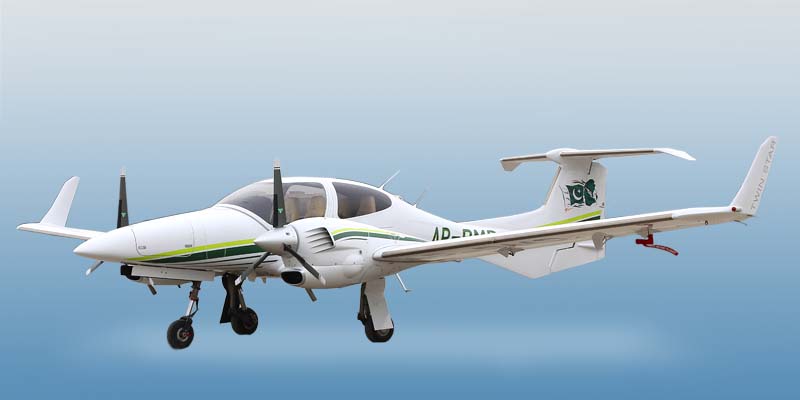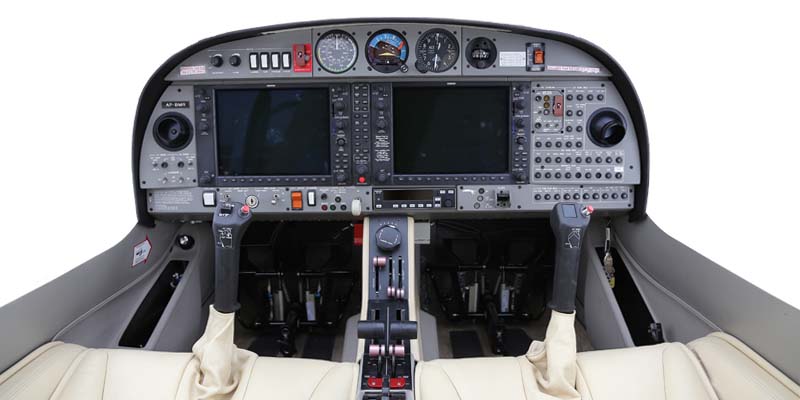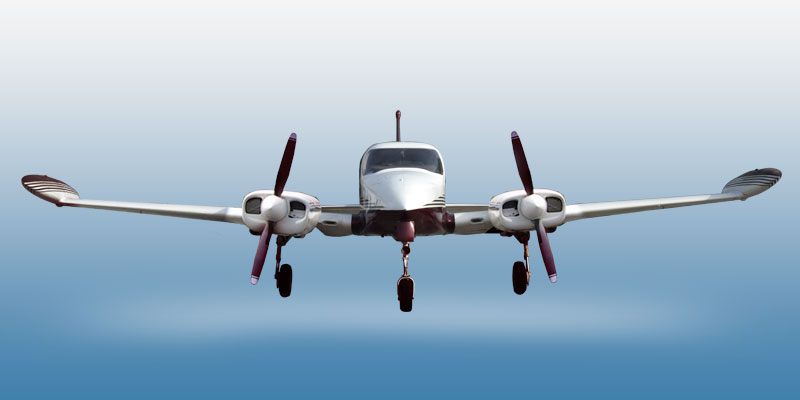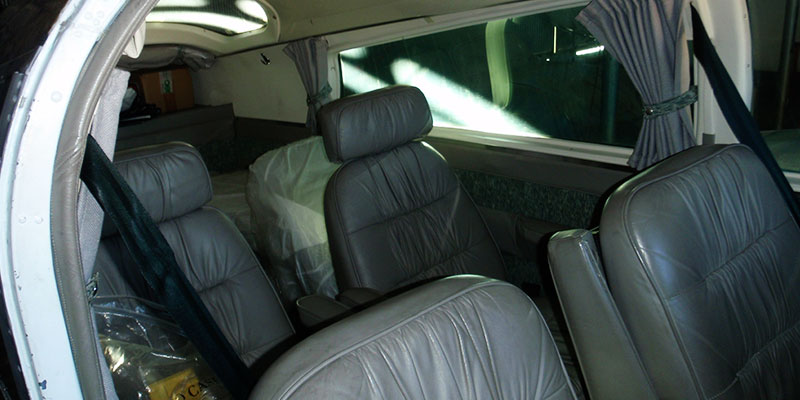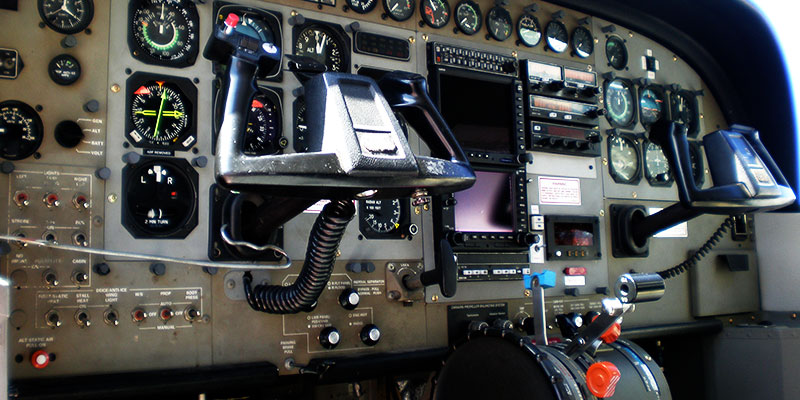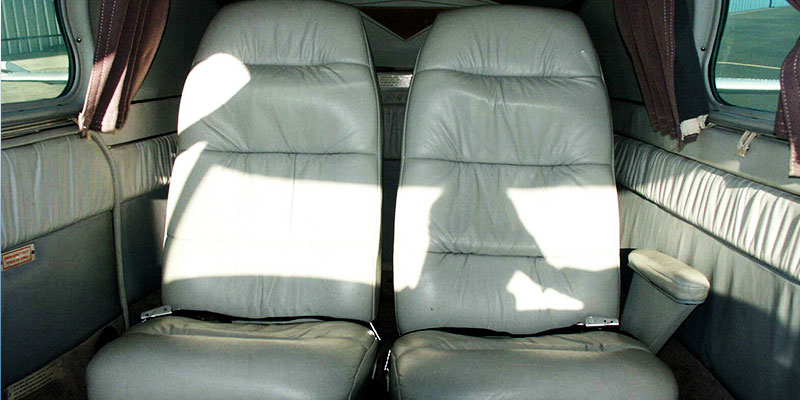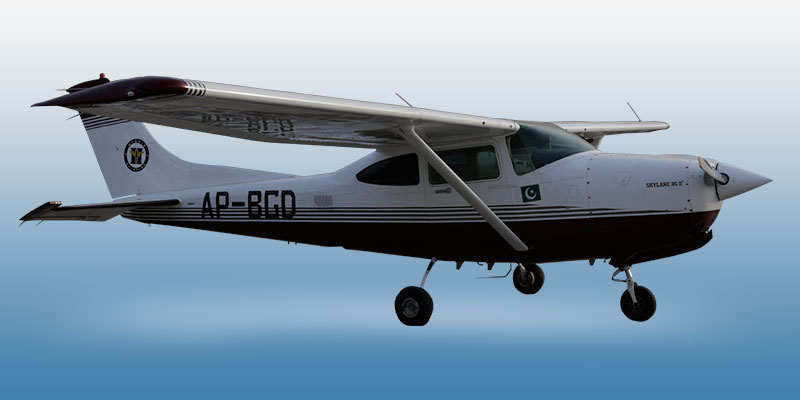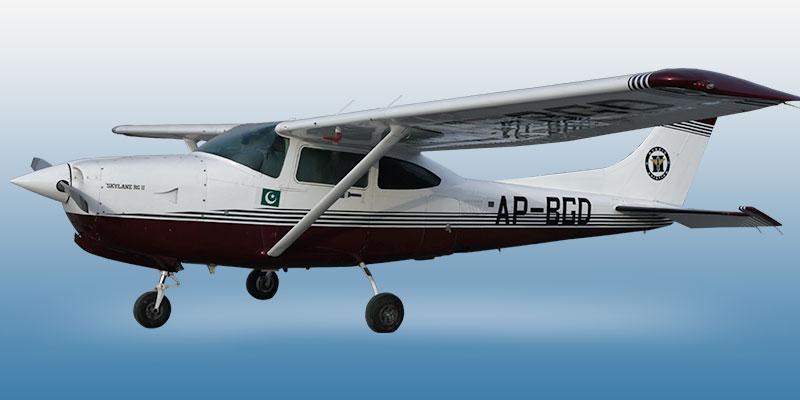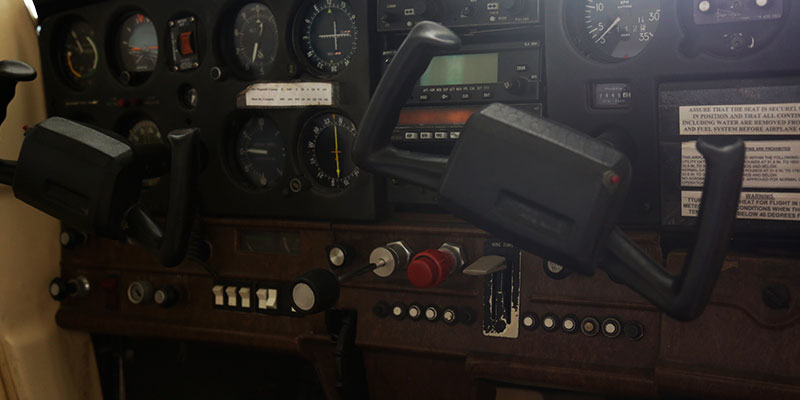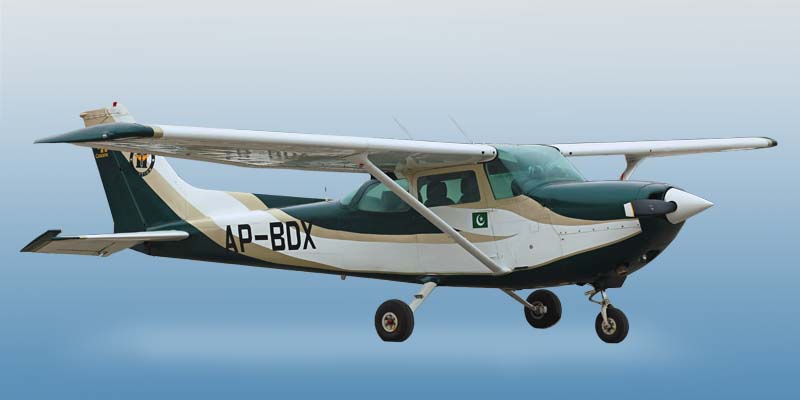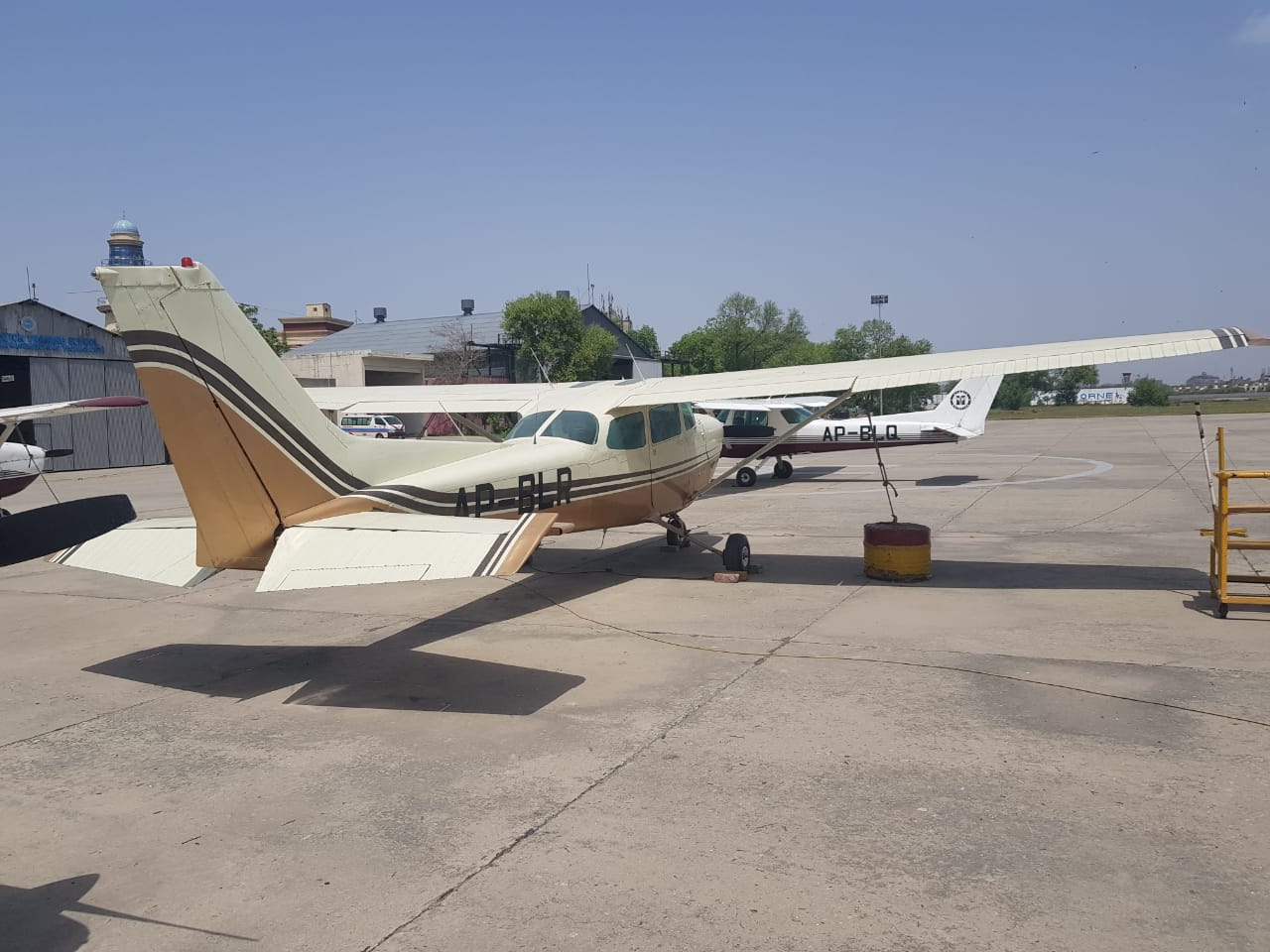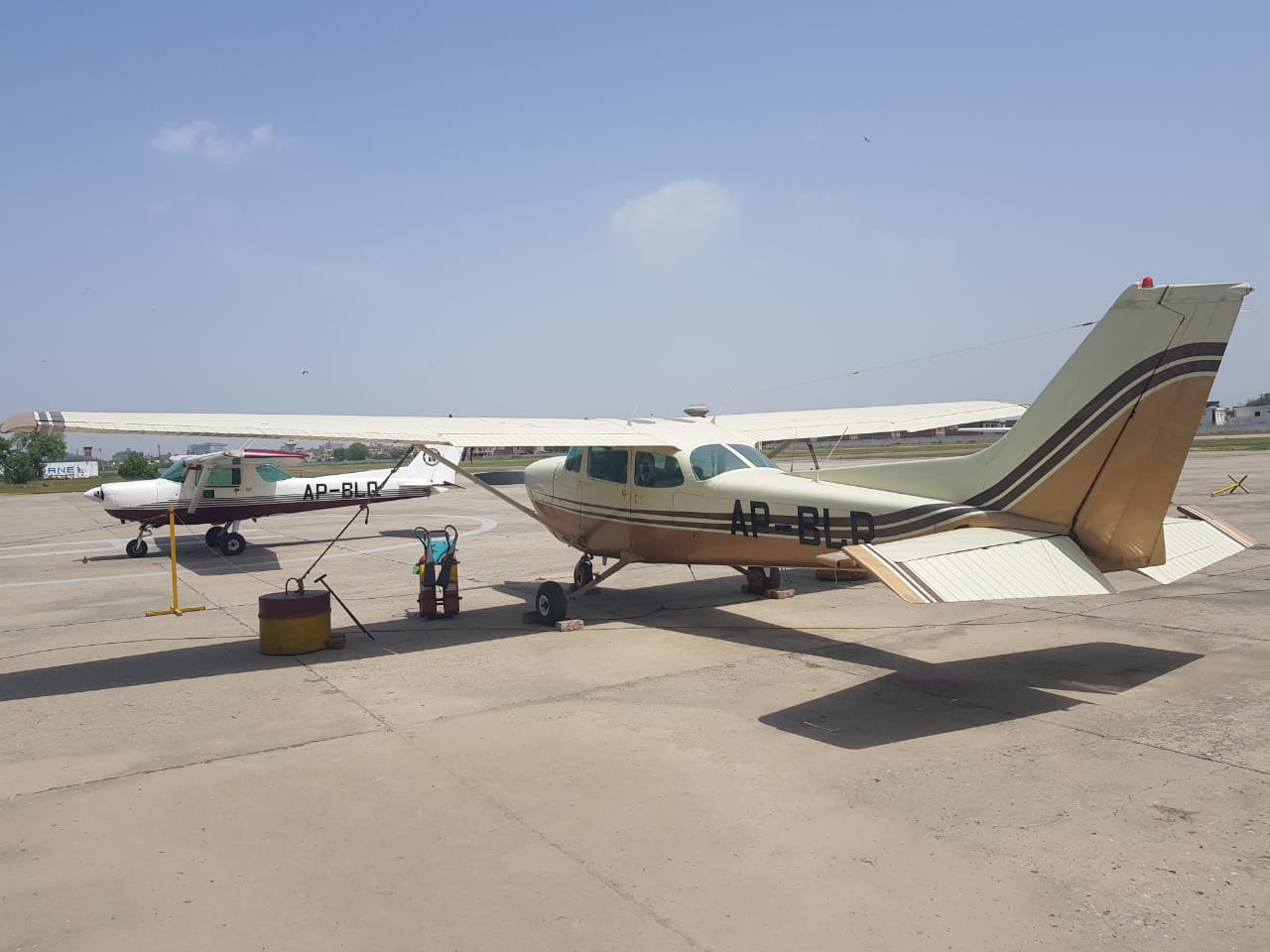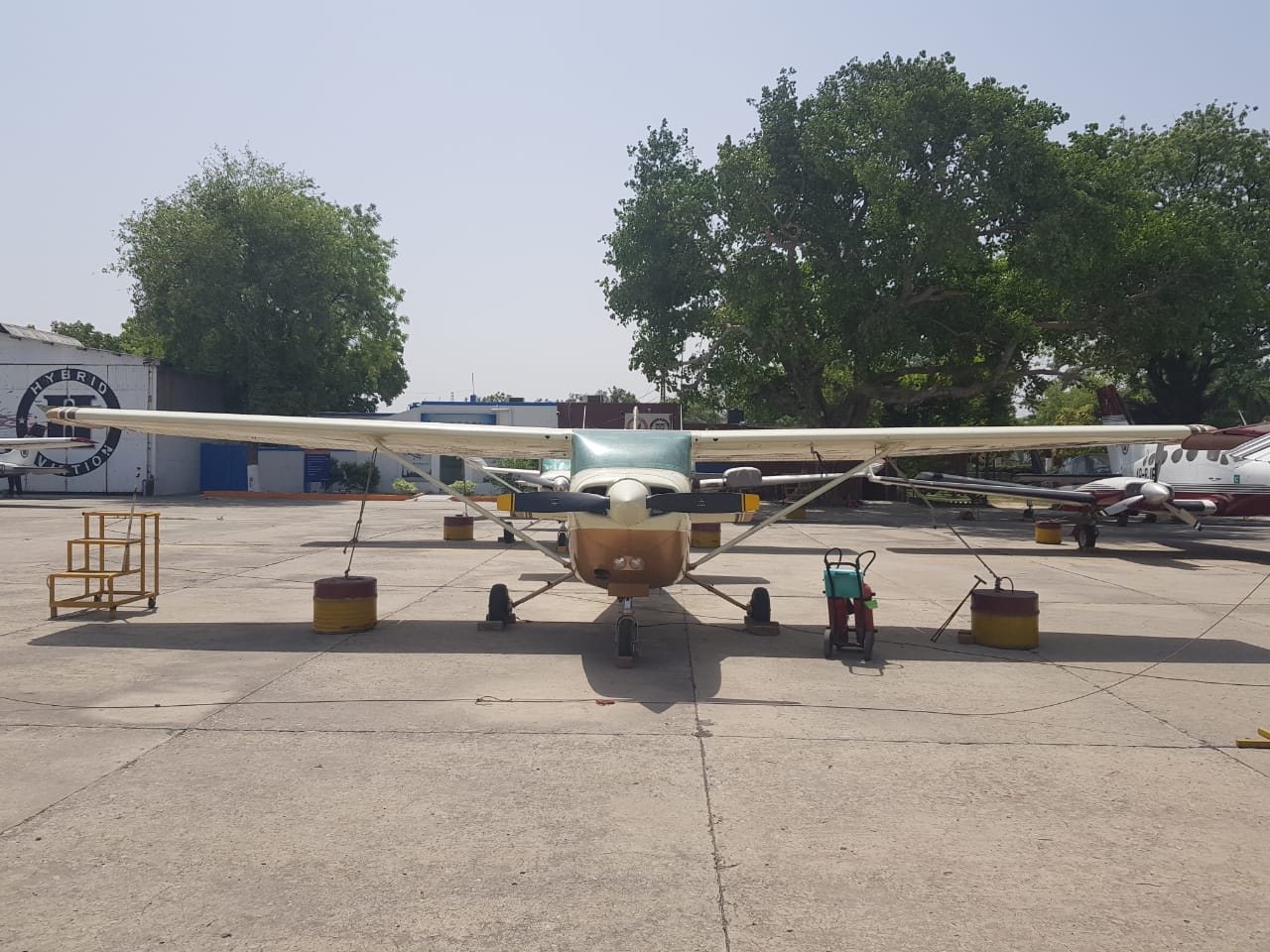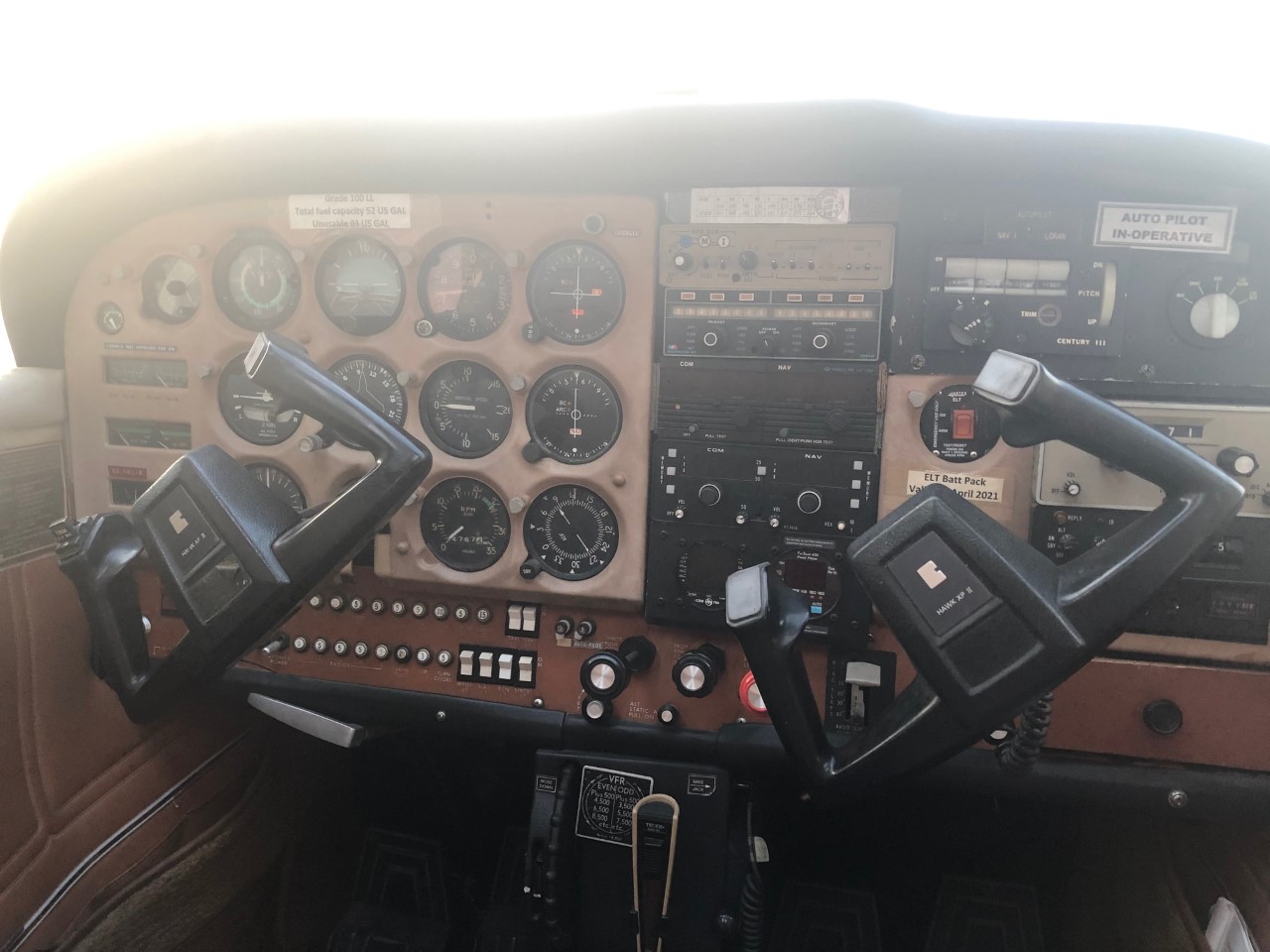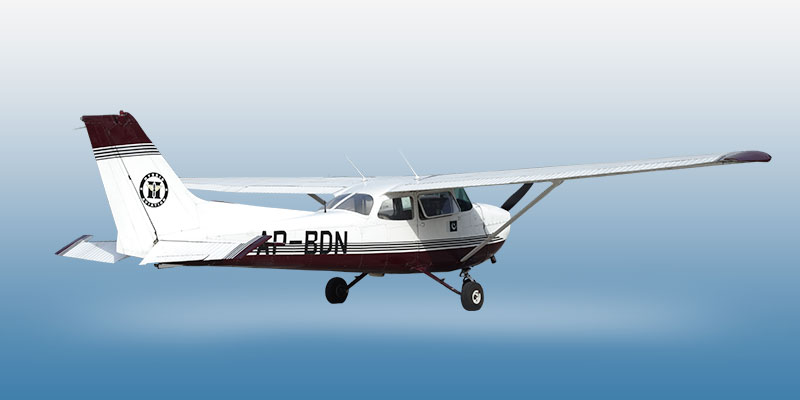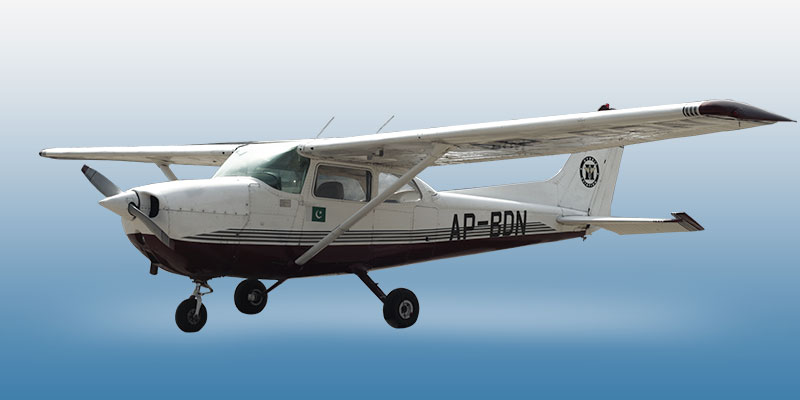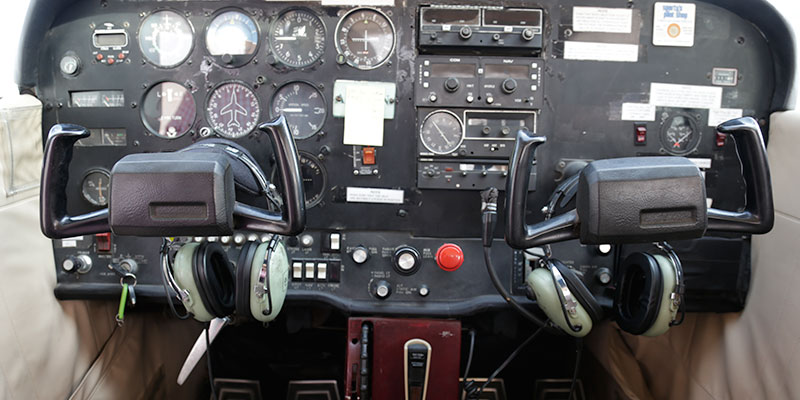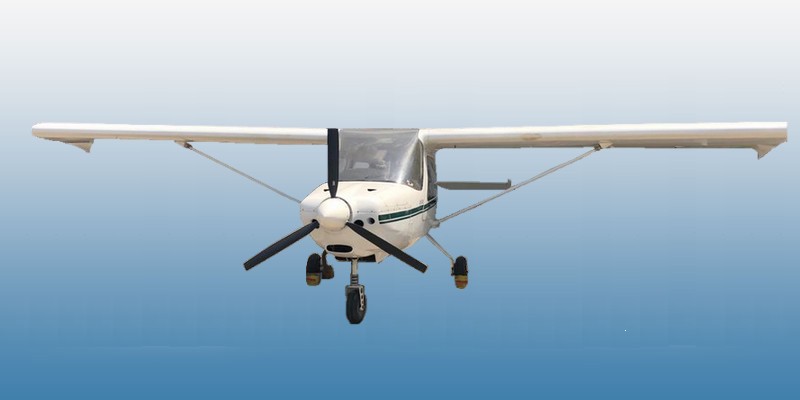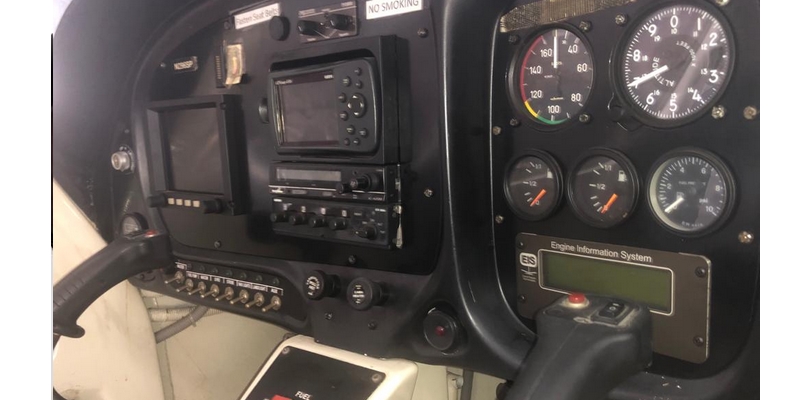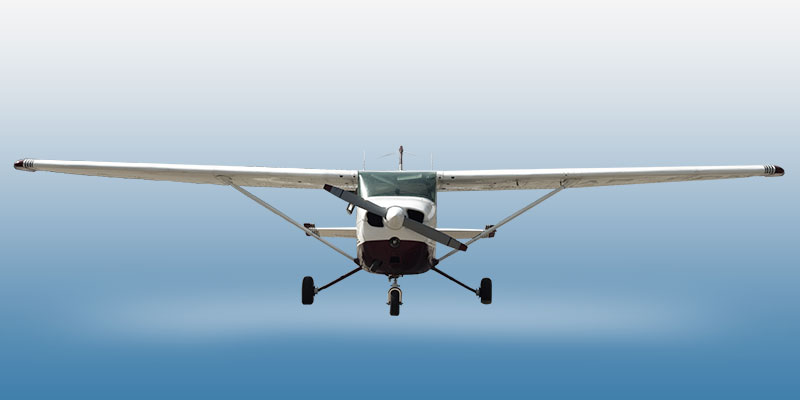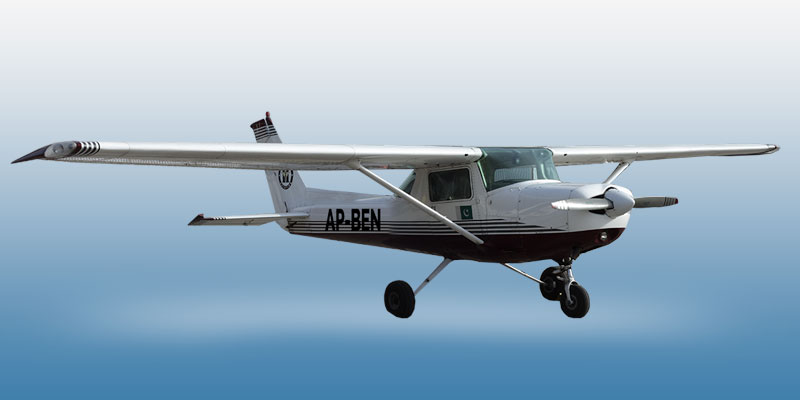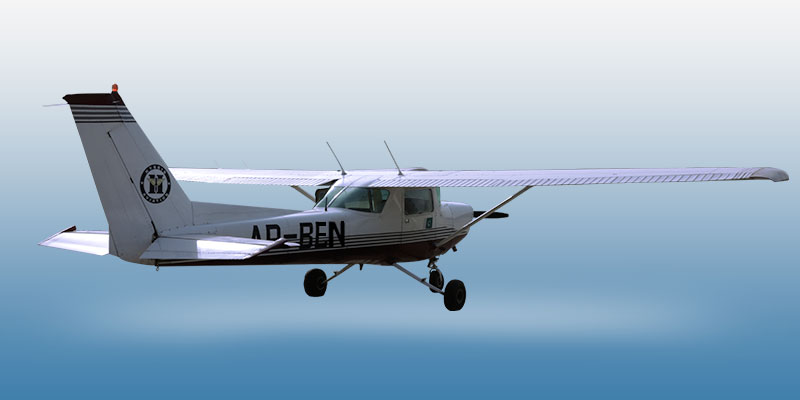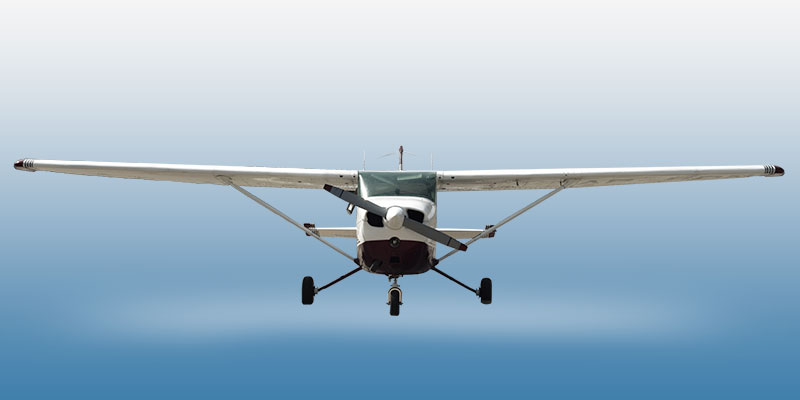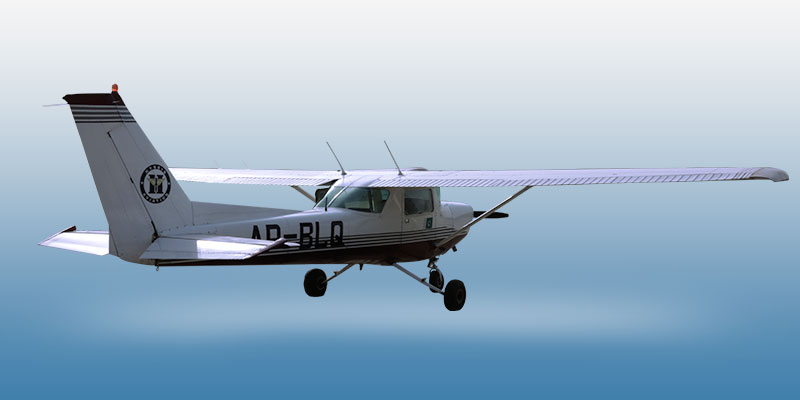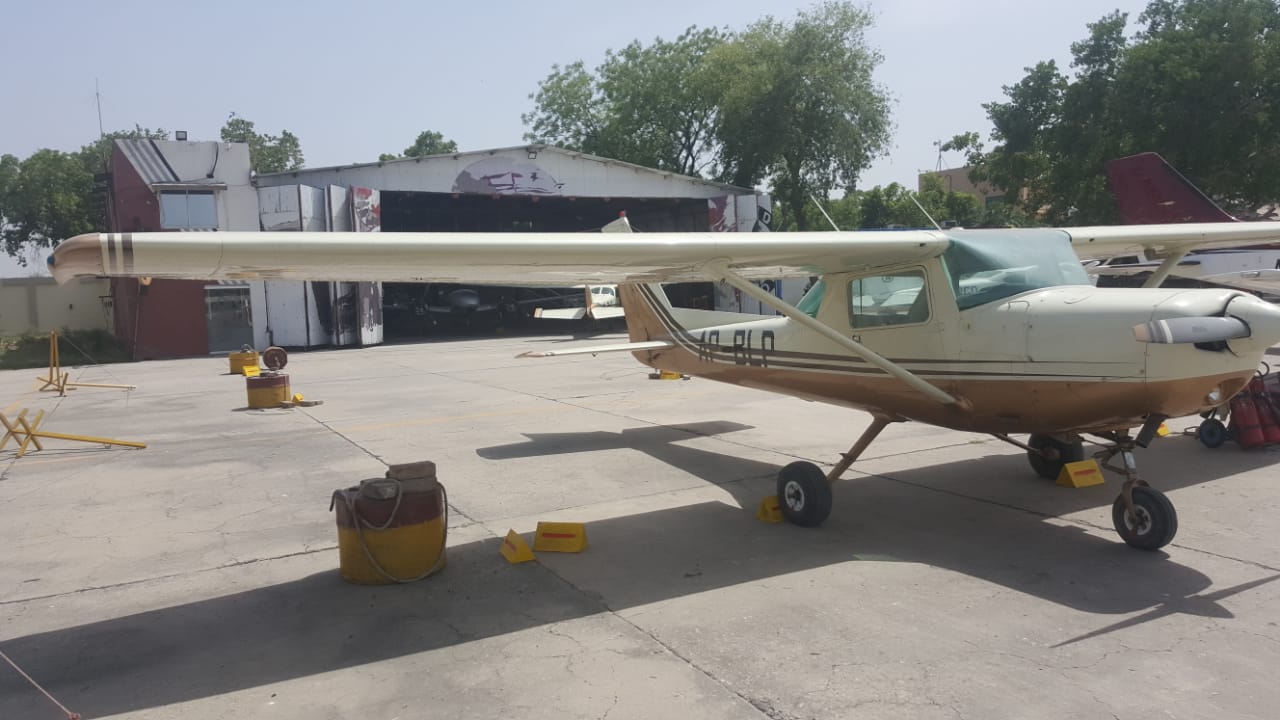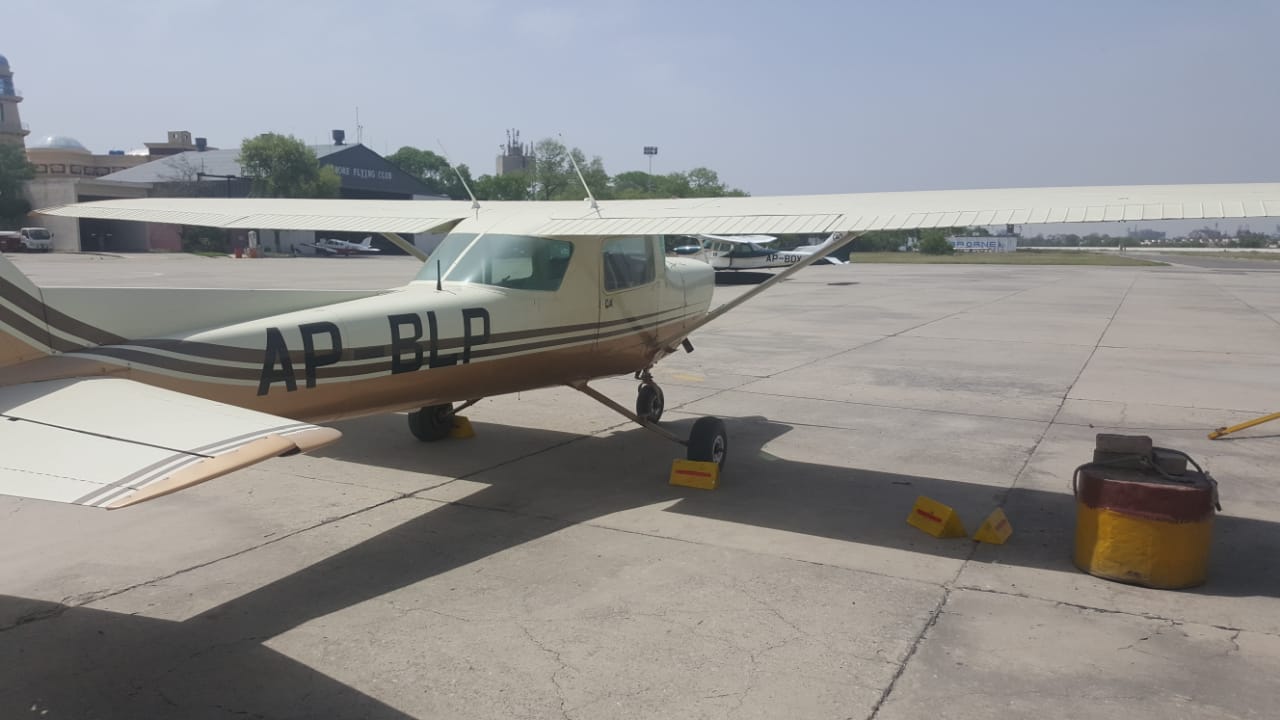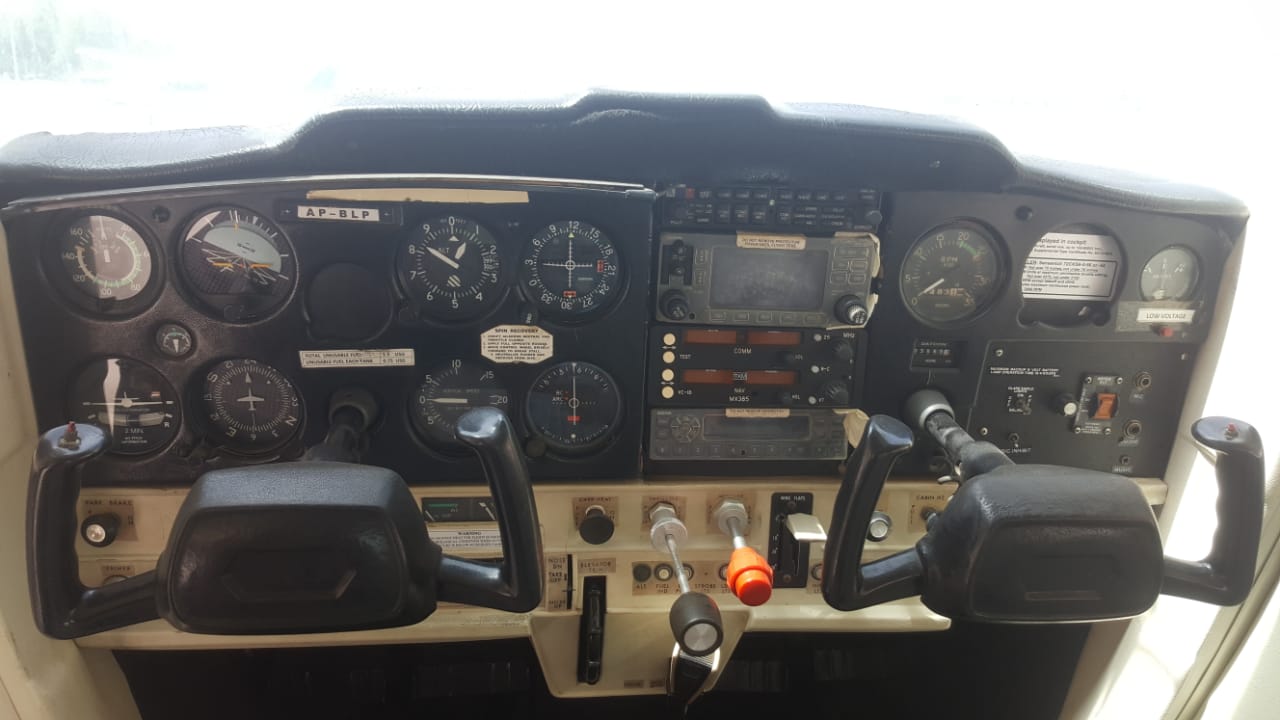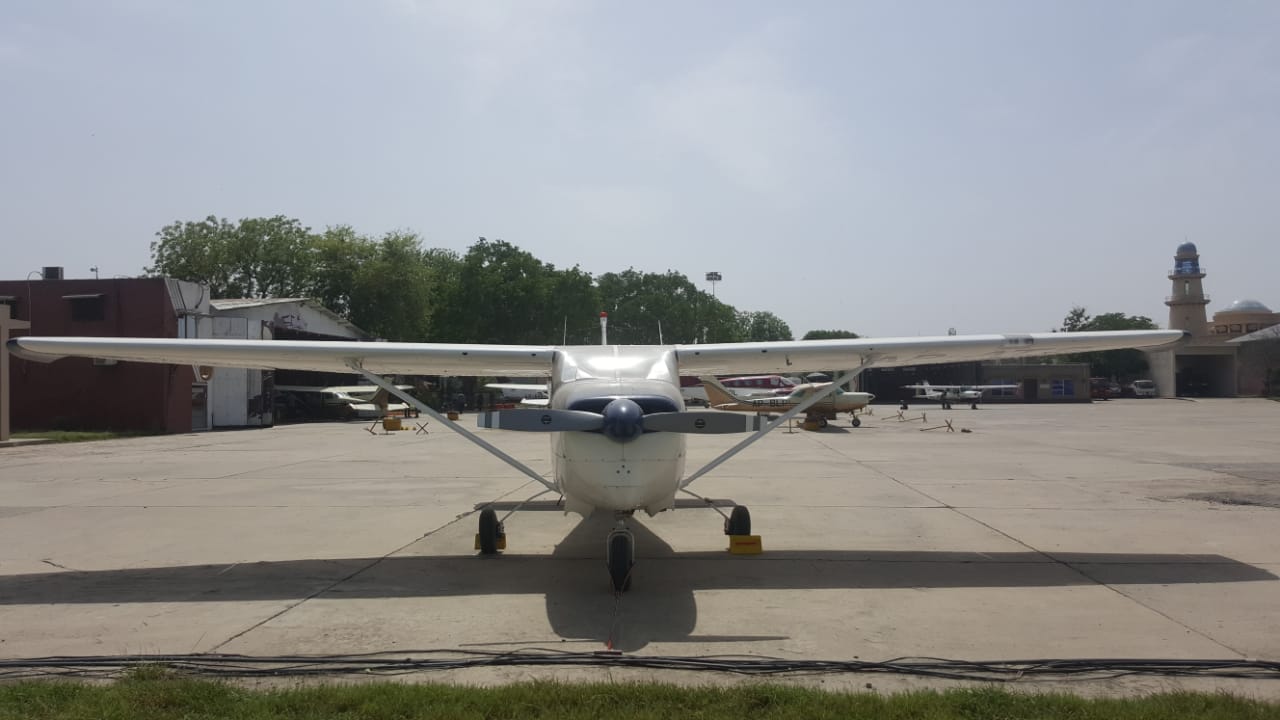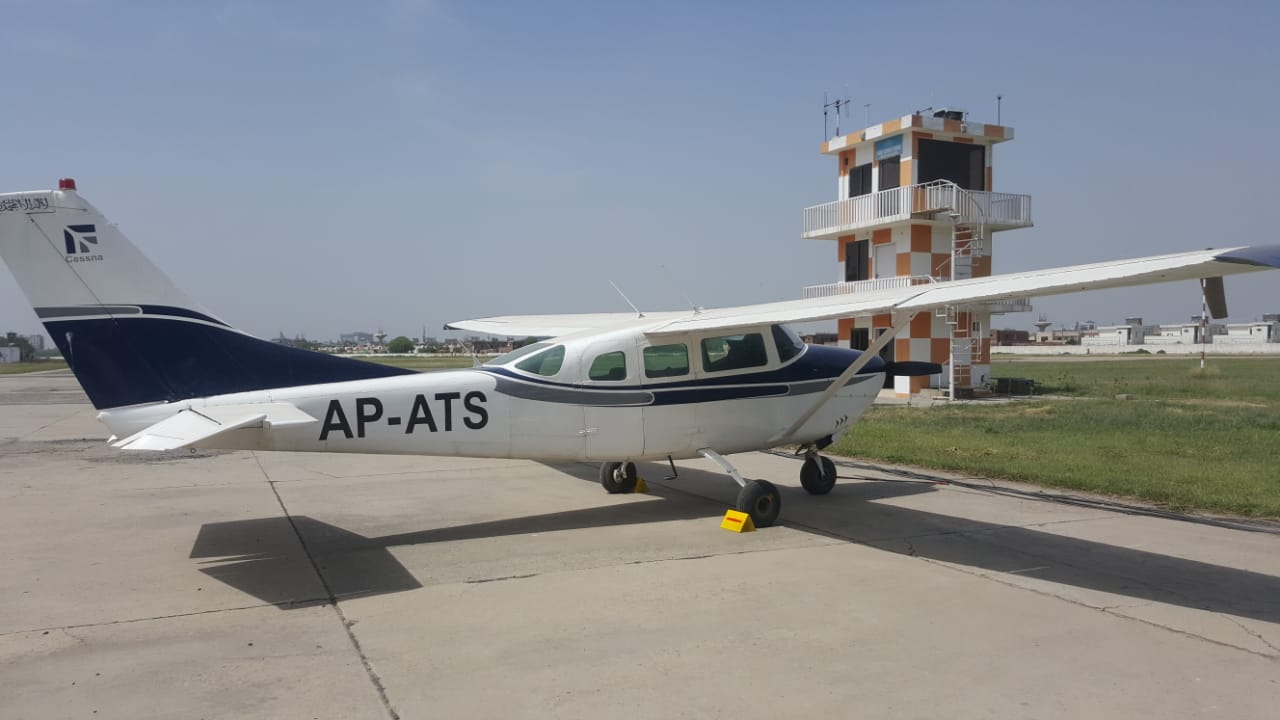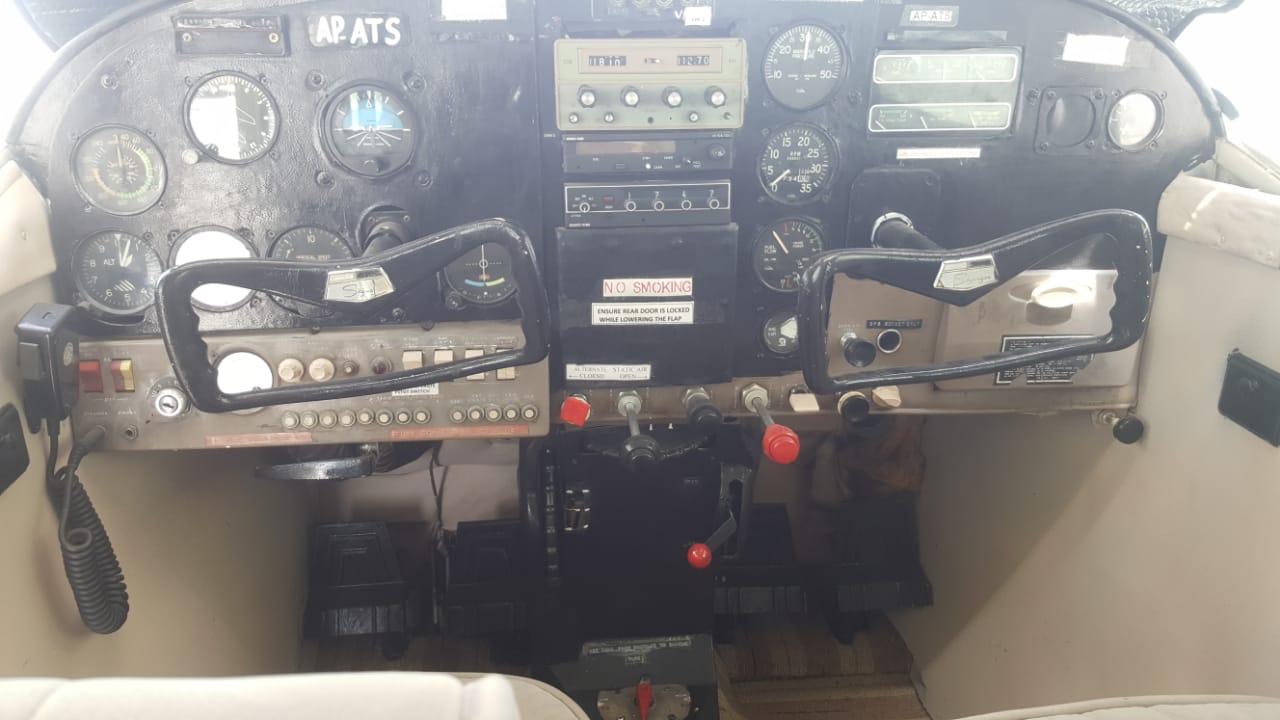Since 1998, Hybrid Aviation has expanded its aircraft fleet significantly. From just one Cessna 310 in the beginning, today Hybrid proudly operates eight aircrafts. All of our aircraft comply with the necessary safety and Civil Aviation Authority (CAA) rules. They carry appropriate insurance for flying training purposes and for carrying members of the public. Each aircraft has its own Technical Log book for perusal. We invite you to take note of our adherence to safety and maintenance of aircrafts.
Cessna 421C (AP-BDL)
The Cessna 421C is the most advanced and luxuries aircraft in Hybrid's fleet. It is a symbol of Speed, Style and Class. It is primarily used for Air Charter service and has been in operation since 2013. Combining spacious cabins and relatively small, efficient engines, the 421C series can carry lots of fuel or a small crowd with their belongings. It has a pleasing interior with full leather seating and wooden side tables. It is ideal for a long business trip over the country.
The 421 is an all-metal low-wing cabin monoplane with a retractable tricycle landing gear, and powered by two geared Continental GTSIO-520-D tractor engines. The cabin is accessed from a door, on the left hand side behind the wing, and has seating for six on the basic 421, or up to ten on later variants.
| • Capacity: 2+5 seats | • Multi Engine |
| • Air Conditioning | • Weather Radar |
| • Pressurized Cabin | • Traffic Radar |
| • Dual VOR Equipped | • Dual ILS Equipped |
| • Dual GPS | • DME Equipped |
| • Auto Pilot with Flight Director | • Engine Fire Detection and Extinguishers |
| • Oxygen Masks | • Refreshment Center |
Cessna 414A (AP-BJE)
The Cessna 414A is the most advanced and luxuries aircraft in Hybrid's fleet. It is a symbol of Speed, Style and Class. It is primarily used for Air Charter service and has been in operation since 2006. Combining spacious cabins and relatively small, efficient engines, the 414 series can carry lots of fuel or a small crowd with their belongings. It has a pleasing interior with full leather seating and wooden side tables. It is ideal for a long business trip over the country. The C414's have safety records that are unmatched by any other light twin.
| • Capacity: 2+5 seats | • Multi Engine |
| • Air Conditioning | • Weather Radar |
| • Pressurized Cabin | • Traffic Radar |
| • Dual VOR Equipped | • Dual ILS Equipped |
| • Dual GPS | • DME Equipped |
| • Auto Pilot with Flight Director | • Engine Fire Detection and Extinguishers |
| • Oxygen Masks | • Refreshment Center |
Diamond DA42 (AP-BMR)
The Diamond DA42 Twin Star is a four seat, twin engine, propeller-driven airplane manufactured by Diamond Aircraft Industries. Its airframe is made largely of composite materials. The DA42 is easy to fly and burns fuel like a single, but with the added safety of a second engine. Impressive cross-country performance pleases private pilots and business owners alike, while the low operating costs make it an ideal advanced trainer.
| • Capacity: 1+3 seats | • Multi Engine |
| • Endurance: 5:00 hours | • Hydraulic retractable landing gear |
| • ILS | • Garmin G1000 |
| • TKS Ice Protection (FIKI) | • Jeppesen ChartView |
Cessna 310P (AP-AVS)
The Cessna 310 is a twin engine American six seat aircraft. This was the very first dual engine aircraft Cessna manufactured and put into production post World War II. These engines were made by Continental and each had 240 horsepower. The engines exhaust flowed under the wings rather than being fed through the nosier augmenter tubes. There were many changes to the first Cessna 310. One of the first changes was the added horsepower and another was the addition of a third window in the 310F series. There were a total of 6,321 Cessna’s built from 1954 through 1980. The Cessna 310 primary role was mainly used for air charter and taxi. The military also used the Cessna for aircraft transport. The United States Military purchased roughly 160 Cessna 310 and they were known as the "Blue Canoe". The Cessna's airspeed, operational cost, and available aftermarket modifications made it well-liked for bush flying.
| • Capacity: 2+4 seats | • Multi Engine |
| • VOR Equipped | • ILS Equipped |
| • NDB | |
Cessna 182 (AP-BGD)
"The Cessna 182 was brought to the market in 1956 as a tricycle gear alternative to the Cessna 180. One year later, the Cessna 182A was introduced as a Skylane. The Cessna 182 was mainly constructed out of aluminum, but the nose cowling along with the wingtips were designed out of fiberglass. The wing was built using the same design as the Cessna 172 along with some of the larger series Cessna. The aileron and flap design matched the 172, but did differ from the larger series such as the 205 and Cessna 206. The initial production version of the Cessna 182 was built with a fixed landing gear and was powered by a two hundred thirty horse power engine. The Cessna R182 and TR182 were offered with turbo and non- turbocharging engines. They have a capacity of four people (1 crew and 3 passengers). The aircraft is twenty nine feet long and has a wingspan of thirty six feet. The average cruising speed is 167 mph and the maximum speed is 173 mph.
| • Capacity: 1+3 seats | • Air Conditioning |
| • Dual VOR Equipped | • Dual ILS Equipped |
| • GPS | • DME Equipped |
| • Storm Scope | |
Cessna 172XP (AP-BDX)
The Cessna 172 Skyhawk is a four-seat, single engine, high wing, fixed-wing aircraft made by the Cessna Aircraft Company. First flown in 1955, more Cessna 172s have been built than any other aircraft. Measured by its longevity and popularity, the Cessna 172 is the most successful aircraft in history. Cessna delivered the first production models in 1956. As of 2015 Cessna and its partners had built more than 43,000. From 1977 to 1981 Cessna produced the R172K Hawk XP, a model available from both Wichita and Reims. This configuration featured a fuel injected, Continental IO-360K (later IO-360KB) derated to 195 hp (145 kW) with a two-bladed, constant-speed propeller. The Hawk XP was capable of a 131-knot (243 km/h) cruise speed.
| • Capacity: 1+3 seats | • Single Engine |
| • Endurance: 4:00 hours | • Dual VOR Equipped |
| • Dual ILS Equipped | • NDB |
| • GPS/Com | • Cessna Transponder |
Cessna 172XP (AP-BLR)
The Cessna 172 Skyhawk is a four-seat, single engine, high wing, fixed-wing aircraft made by the Cessna Aircraft Company. First flown in 1955, more Cessna 172s have been built than any other aircraft. Measured by its longevity and popularity, the Cessna 172 is the most successful aircraft in history. Cessna delivered the first production models in 1956. As of 2015 Cessna and its partners had built more than 43,000. From 1977 to 1981 Cessna produced the R172K Hawk XP, a model available from both Wichita and Reims. This configuration featured a fuel injected, Continental IO-360K (later IO-360KB) derated to 195 hp (145 kW) with a two-bladed, constant-speed propeller. The Hawk XP was capable of a 131-knot (243 km/h) cruise speed.
| • Capacity: 1+3 seats | • Single Engine |
| • Endurance: 4:00 hours | • Dual VOR Equipped |
| • Dual ILS Equipped | • NDB |
| • GPS/Com | • Cessna Transponder |
Cessna 172N (AP-BDN)
The Cessna 172 is the most popular and mass manufactured light aircraft on record. There has been over forty three thousand made to date. The original Cessna 172 that was produced in the late 1950’s was powered by a one hundred forty five horsepower six cylinder air cooled engine. The aircraft weighs roughly twenty two hundred pounds and was brought to the market with a base price of eight thousand nine hundred ninety five US dollars. There were many variations of the original Cessna such as the 172A through the 172S. Another very popular model was the Cessna 172 Skyhawk.
| • Capacity: 1+3 seats | • Single Engine |
| • Endurance: 4 hours | • Dual VOR Equipped |
| • Dual ILS Equipped | • NDB |
STORM RALLY 105 (AP-ZBS)
The Rally is a high-wing, strut-braced monoplane of conventional design and is marketed in factory-built or kit form. The cabin seats two, side-by-side, and the undercarriage is of fixed, tricycle configuration. The aircraft is available in two versions, one with a maximum takeoff weight of 450 kg (990 lb) in order to qualify as an ultralight under European Joint Aviation Authorities regulations and a "sport" version with a weight of 600 kg (1,320 lb) that qualifies as a special Light Sport Aircraft in the United States.
Compete with the new aircrafts being introduced from their competitors. Additional design goals were to improve useful load through a gross weight increase, decrease internal and external noise levels and run better on the then newly introduced fuel engine. These aircrafts require vigilance in tricky winds, a trait that has made them good trainers for young pilots.
| • Seats 1 + 1 | • SkyView glass cockpit system |
| • Combination EFIS EMS | • Moving map with synthetic vision |
| • FlightDEK D180 | • ADAHRS |
| • Transponders | • COM Radios |
| • Autopilot Control Panels | • Knob Control Panels |
| • ILS, VOR, ADF | |
Cessna 152 (AP-BEN)
First delivered in 1977, the Cessna 152 was a modernization of the proven Cessna 150 design. The C152 was intended to compete with the new aircrafts being introduced from their competitors. Additional design goals were to improve useful load through a gross weight increase, decrease internal and external noise levels and run better on the then newly introduced fuel engine. It was powered by a Lycoming O-235 engine that had a 110 horsepower. This airplane was constructed of all metal and the wing tips were reinforced with a glass reinforced plastic. These aircrafts require vigilance in tricky winds, a trait that has made them good trainers for young pilots.
| • Capacity: 2 seats | • Single Engine |
| • Endurance: 3:30 hours | • VOR Equipped |
| • ILS | • NDB |
| • GPS/Com | • Cessna Transponder |
Cessna 152 (AP-BLQ)
First delivered in 1977, the Cessna 152 was a modernization of the proven Cessna 150 design. The C152 was intended to compete with the new aircrafts being introduced from their competitors. Additional design goals were to improve useful load through a gross weight increase, decrease internal and external noise levels and run better on the then newly introduced fuel engine. It was powered by a Lycoming O-235 engine that had a 110 horsepower. This airplane was constructed of all metal and the wing tips were reinforced with a glass reinforced plastic. These aircrafts require vigilance in tricky winds, a trait that has made them good trainers for young pilots.
| • Capacity: 2 seats | • Single Engine |
| • Endurance: 3:30 hours | • VOR Equipped |
| • ILS | • NDB |
| • GPS/Com | • Cessna Transponder |
Cessna 152 (AP-BLP)
First delivered in 1977, the Cessna 152 was a modernization of the proven Cessna 150 design. The C152 was intended to compete with the new aircrafts being introduced from their competitors. Additional design goals were to improve useful load through a gross weight increase, decrease internal and external noise levels and run better on the then newly introduced fuel engine. It was powered by a Lycoming O-235 engine that had a 110 horsepower. This airplane was constructed of all metal and the wing tips were reinforced with a glass reinforced plastic. These aircrafts require vigilance in tricky winds, a trait that has made them good trainers for young pilots.
| • Capacity: 2 seats | • Single Engine |
| • Endurance: 3:30 hours | • VOR Equipped |
| • ILS | • NDB |
| • GPS/Com | • Cessna Transponder |
Cessna 206 (AT-ATS)
The Cessna 205, 206, and 207, known primarily as the Stationair (and marketed variously as the Super Skywagon, Skywagon and Super Skylane) are a family of single-engined, general aviation aircraft with fixed landing gear, used in commercial air service and also for personal use. The family was originally developed from the popular retractable-gear Cessna 210 and produced by the Cessna Aircraft Company. The line's combination of a powerful engine, rugged construction and a large cabin has made these aircraft popular bush planes. Cessna describes the 206 as "the sport-utility vehicle of the air." These airplanes are also used for aerial photography, skydiving and other utility purposes. They can also be equipped with floats, amphibious floats and skis. Alternatively, they can be fitted with luxury appointments for use as a personal air transport.
| • Capacity: 1+5 seats | • Single Engine |
| • Endurance: 5:00 hours | • Dual VOR Equipped |
| • Dual ILS Equipp | • NDB |
| • GPS/Com | • Cessna Transponder |
 Our Fleet
Our Fleet 